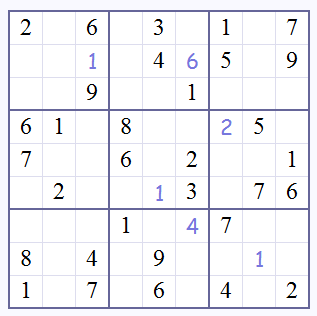Bastion
LQ: 9.15
Recommended Age: 10+
Skills Used: Planning, Working Memory, Mathematics, Reading

iTunes / Google Play / Chrome / Facebook / Online Sudoku
In Sudoku, players have to fill in a 9×9 grid with the numbers 1 through 9. The goal is to have each row and column contain the numbers 1 through 9, without repeating any numbers. Each of the smaller 3×3 blocks contained within the grid must also contain the numbers 1 through 9. The game features no inappropriate content, but players need to have a basic understanding of math and numerals to play, so Sudoku is recommended to players ages 8 and up.
Teachers: check out the classroom guide!
Developing a systematic approach for setting and achieving goals.

Creating a method for determining possible number combinations is an essential skill in Sudoku, as players need to use the rules of the game as a basis for developing a strategy. For example, any number can only appear once in each column, row and 3X3 square. If a row has two blank boxes, players first count 1-9 to find out what the two missing numbers are (let's say 3 and 7). Next, players should fill out as many surrounding blocks as possible, using a process of elimination to cross-reference the numbers. If one of the row's empty blocks sits in a column where the number 3 is already in use, then the answer must be 7. Using a planned approach will vastly improve players' efficiency and allow them to avoid the frustration of having to go back later to fix their mistakes.
Recalling and retaining information in our minds while working.
Sudoku often requires players to make informed guesses, trying out different combinations of numbers in order to narrow down the answers. Players need to keep this information in mind as they continue into different areas of the puzzle, creating a mental note of the numeric combinations they've tried. Doing so will help them build even larger combinations of numbers across rows, columns and grids. By keeping the numerical information in mind, players can inform themselves of the possibilities available to them. Doing so allows players to make less mistakes that will cost time down the road, and helps them to make more accurate, correct moves.
All membership plans come with full access to our entire suite of tools learning guides, and resources. Here are a few of the ones we think you’ll like the most: